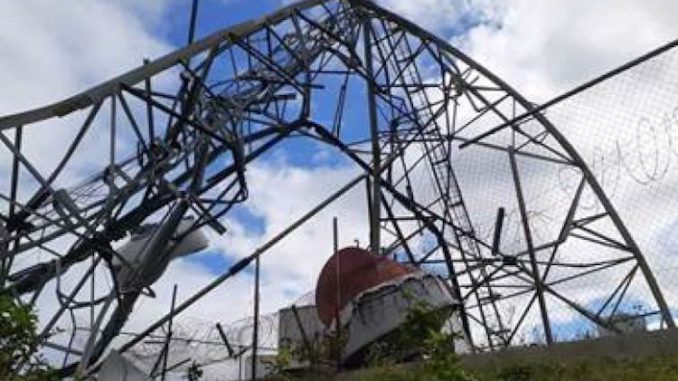
Kacific Broadband Satellites Group and the International Telecommunication Union (ITU) have joined forces in support of Vanuatu to provide a reliable communications network when disasters strike.
The collaboration aims to bring connectivity, in particular to remote and outer islands, including parts of Vanuatu where existing telecommunications networks were recently destroyed in the wake of the Category-Five Cyclone Harold, which cut a deadly path through the north of the country in early April.
“This initiative will strengthen disaster resilience of Vanuatu,” said Doreen Bogdan-Martin, Director of ITU’s Telecommunication Development Bureau. “By building closer collaboration, partnerships and integrating innovative digital technologies in disaster risk reduction and management, we can go much further in terms of mitigating against disasters and saving lives.”
After Tropical Cyclone Harold: making a difference in Vanuatu
The collaboration is having a significant impact across the region, including in hard-hit Vanuatu where it has provided equipment, such as Very Small Aperture Terminals (VSATs), to deliver connectivity to help relief efforts after normal network coverage was wiped out.
On 7 April, the morning after Tropical Cyclone Harold passed through Vanuatu, one community chief expressed his amazement that people could still access the internet even after all the big networks went offline. This was due to the community WiFi service offered by the VSAT provided by ITU and Kacific.
“Truly, this small network is amazing, and I can see how important it is for our communities in times like this,” he said. “Thank you so much to ITU and Kacific for making communication easy and still connected during such a difficult time.”
Similar sentiments were expressed by Vanuatu’s government for the satellite bandwidth capacity provided to their Emergency Operations Centres (EOCs) in the affected northern central part of Vanuatu.
The VSATs that were deployed assist assessment teams on the ground who have been helping with detailed sectoral assessments that will form the basis for the Post Disaster Needs Assessment for Vanuatu’s recovery effort.
“Prior to Topical Cyclone Harold, Kacific had been working closely with Vanuatu’s government to connect remote medical centres and schools,” said Lakshminarasimhan Sundarrajan, Kacific’s Vice President of Pre-Sales. “In the aftermath of Hurricane Harold, Kacific continues to partner with the government and international agencies, including ITU, to enable broadband connectivity in unserved areas. Kacific will continue to support Vanuatu with high-speed broadband connectivity to reach essential services in the country during these trying times.”
Beyond equipment: sharing knowledge and expertise
As part of the Development of Satellite Communications Capacity and Emergency Communications Solutions for the Pacific Islands, Kacific is in the process of donating some 40 1.2m Ka-band terminals, which provide high-speed satellite connectivity services that will address, among other things, the need for better communications in the aftermath of disasters.
Kacific will also share its technical expertise by training local partners on using and maintaining the satellite ground equipment. Crucially, local partners will be trained to use this service for emergency telecommunications to aid recovery efforts following disasters.
One major lesson to be learned from the disaster caused by cyclone Harold is the importance of development and implementation of updated National Emergency Telecommunication Plans (NETPs) by the countries. When disaster strikes there is no time to think about what to do and how to organise response. It is crucial that all stakeholders are prepared beforehand and ready to take action.
ITU, with its Australian funding partner Department of Infrastructure Transport, Regional Development and Communications (DITRDC), had worked to develop NETPs for Papua New Guinea, Vanuatu, Samoa and Solomon Islands in the Pacific. ITU has developed guidelines for NETPs which assist countries in enhancing their resilience and capacity to provide the most efficient response to disasters.
Beyond disaster recovery
Providing reliable telecommunications infrastructure as a foundation for economic development in a region as remote large as the Pacific remains an uphill battle.
ITU is developing additional strategies to address these challenges as well as to implement low-cost and reliable network configurations to minimise the disruptions that can be caused by both terrestrial and satellite failures particularly when disasters strike. To realise this objective, ITU works with partners like Kacific to develop remote satellite connectivity capacity.
“Most of the installations of satellite equipment have been in the schools, which caters to the educational needs – and also serve as the rural e-community center for other applications like health services,” said Aamir Riaz from ITU’s Regional Office Asia Pacific. “On the other hand, some equipment is strategically kept by countries in repositories which can be mobilised for any disaster response.”
Next up: Kacific1
Kacific’s high-throughput satellite, Kacific1, which is now fully active, provides affordable satellite broadband to 25 nations in Asia Pacific.
The satellite, which uses the high-frequency Ka-band spectrum, is the most powerful broadband satellite serving the region to date. Its high-throughput technology reuses spectrum multiple times, resulting in greater spectral efficiency and therefore a lower cost per bandwidth.
“We are delighted to be partnering with the ITU for this critical initiative,” said Kacific Founder and CEO, Christian Patouraux. “This initiative is possible because our Kacific1 satellite is now delivering affordable satellite broadband to the islands of the Pacific.
This brand new, high-throughput satellite provides an exceptional service at a fraction of the cost of other technologies, making its services practical for rural, remote and even semi-urban communities. We will create more products and work with our local partners in each country to increase their technological expertise and ability to support disaster preparedness and recovery efforts.”
Sites running the service are located in rural and remote communities within seven countries: Papua New Guinea, Fiji, Samoa, Tuvalu, Tonga, Kiribati and Vanuatu.






